A friend of mine has recently relocated to Palmerston, and invited me to stay over at her new house. This presented the perfect opportunity to explore the quiet town of 890 souls nestled in the shadow of Puketapu’s distinctive cone.
So I set off up north on a quiet Sunday morning, once again passing the familiar waypoints on the Northern Motorway. When I spotted the cone of Puketapu crowned with its stone monument, I knew that the 45 minute drive was almost done.
Once I arrived I was offered the comforts of hot chocolate, a spa bath, and a selection of fluffy animals to cuddle. Then it was out to explore the world of Palmerston. What historic sites can be found about the town? The internet is curiously silent on the matter, with most of the results being for some backwater in the North Island, so we had to gather our intel the old fashioned way.
Our first stop was the St James Presbyterian Church, an impressive edifice built from local limonitic(iron ore containing) sandstone which lends a unique and beautiful orange-brown tint to the structure.
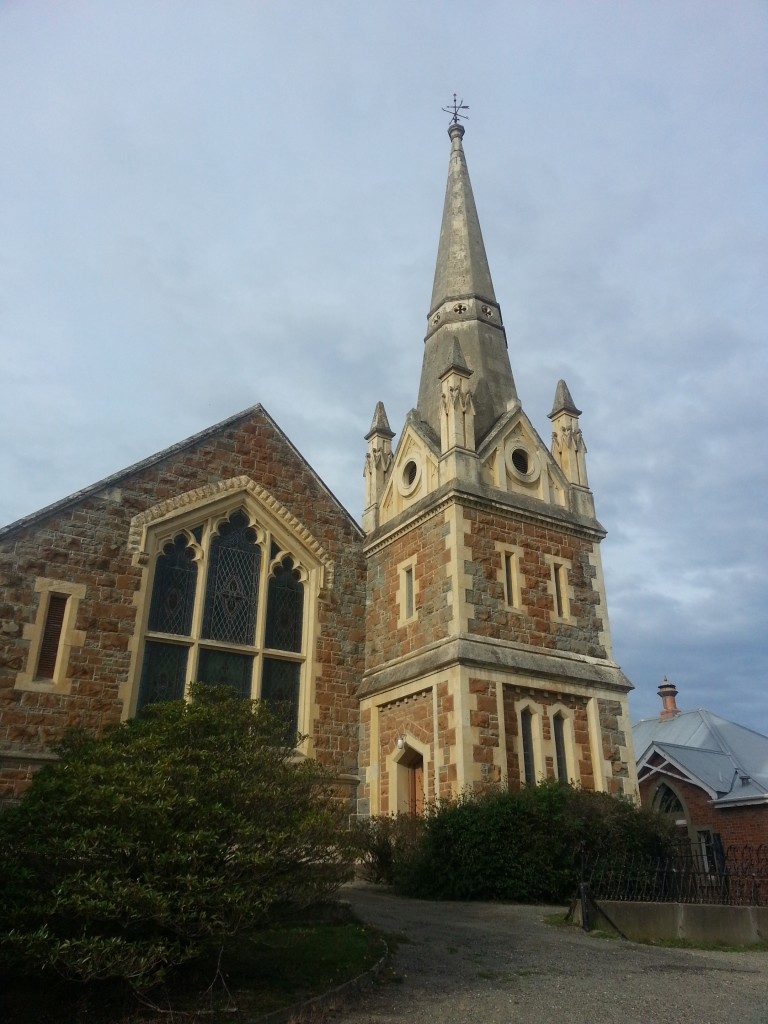
This was the Palmerston Presbyterian congregation’s second church, the first having been in Gilligan St (Google street view seems to indicate it’s still there, so I’ll have to check it out on another visit). Construction of the “new” church was begun in January 1876 and despite delays, extra costs, and the insolvency of the builder, was opened in December that year.
The door was open so we took a peek inside. The church is designed to seat 600, but not a soul was present as we took in the solemn atmosphere. Above, a striking stained glass window drew our attention.
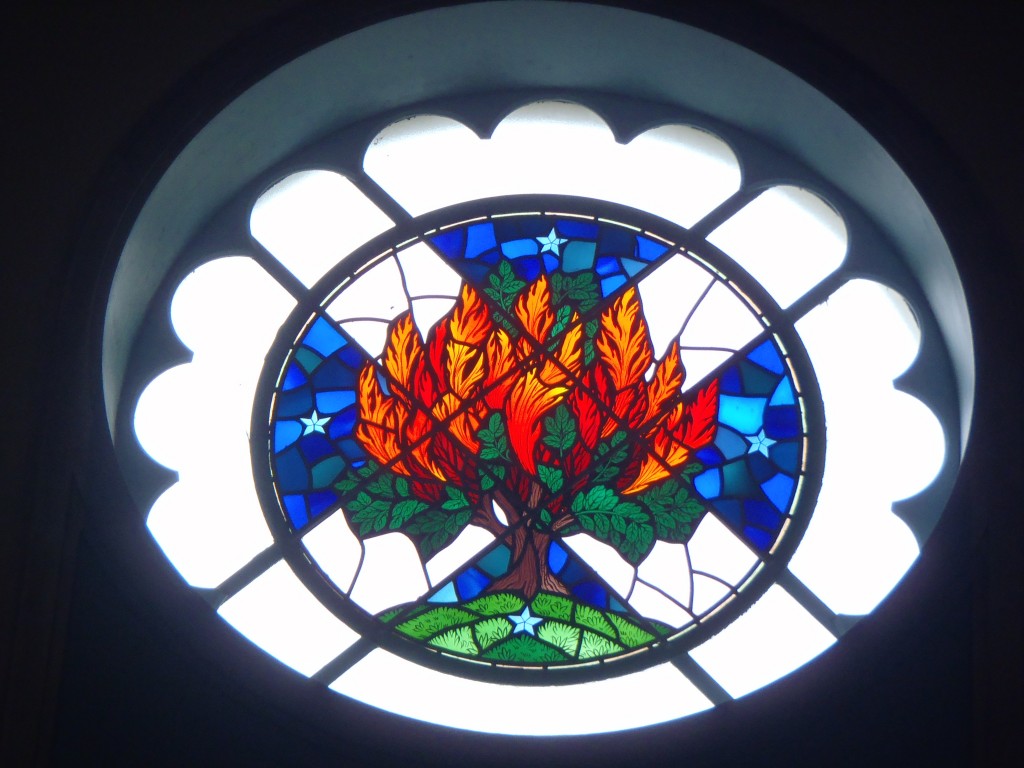
We continued our journey down Tiverton St, approaching the junction around which the settlement of Palmerston flourished.
When I saw a store called Good Keen Kiwi Books, I had to pop in. There was a fantastic selection of New Zealand books, including a section of obscure Otago history which, had I brought any cash with me, I would soon have carried away most of. The older couple running the shop immediately offered me a cuppa, and although I had to decline we did have a quick chat about local attractions. Climbing Puketapu is the obvious starting point, but I was warned that conditions might be a little slippery today. And they handed me In the Land of the Dwindle River by George Griffiths, which detailed many local sites of interest. Jackpot!
Moving on, sadly unable to take any of the books with me, we reached the main street and train station (now a restaurant). In the plaza by the station stands a striking monument, topped by a statue of “Zealandia”, the anthropomorphic personification of New Zealand. She’s considered a bit old fashioned these days.
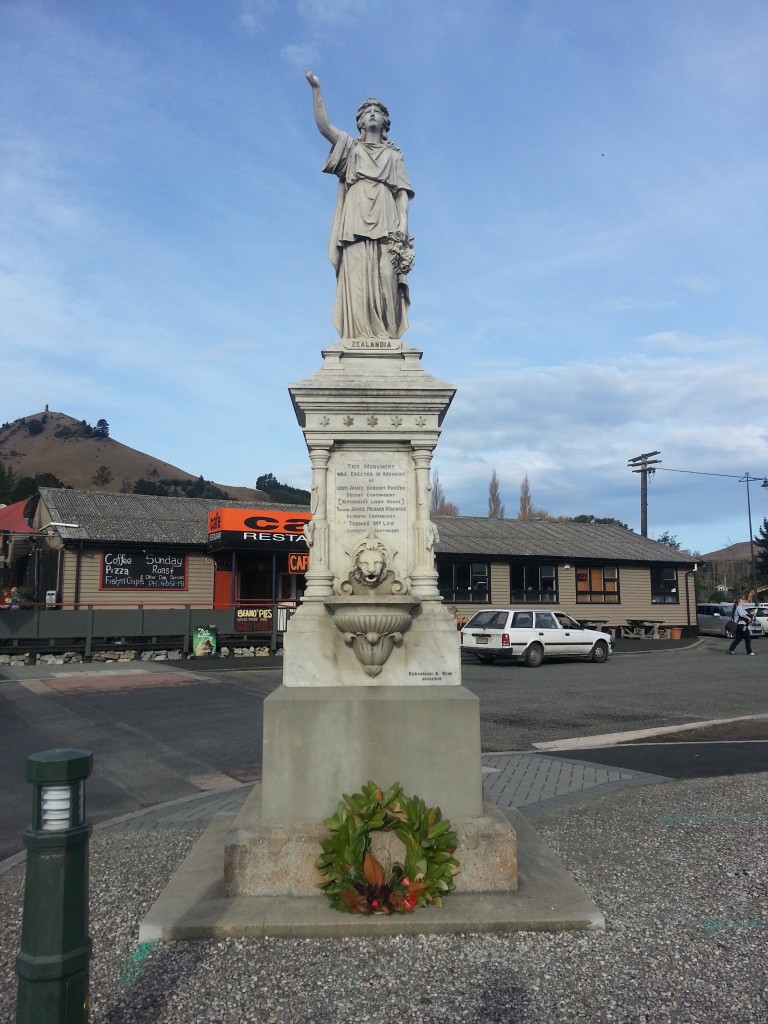
This monument was unveiled in 1903 to commemorate the five Waihemo men who fell in the South African Wars of 1899-1902. These wars were the first overseas conflict that the young country of New Zealand participated in, all gung-ho to prove itself on a world stage now that the internal conflict of the New Zealand Wars had been put to rest. So eager were we, in fact, that we volunteered to send troops before war had even officially been declared, and our men beat the Australians there by a matter of days.
Of course this was before the trauma of the First World War, back when we were filled with ideas of the glory and romance of battle. Little did we foresee just how completely those dreams would turn to nightmares.
We crossed over the road to the information centre, where we picked up some brochures and had a good chat with the lady there. Then we grabbed some delicious home-made pies from the Welcome Swallow Bistro and Cafe and headed back to our base of operations to plan our next move.
It was too late in the day to make an attempt on Puketapu, so we opted instead to take a walk around Palmerston Cemetery (yes, of course this is a normal thing to do). The cemetery is on the main road just south of town and we arrived just as the setting sun was casting its last rays down over the headstones and Puketapu beyond.

A couple of horses watched us curiously from a paddock nearby as we walked quietly between the rows, absorbing the history of the region through those who have made this their final resting place.
One of our aims was to find the burial place of the district’s most famous son, Sir John McKenzie, the man who broke up the sheep runs and in whose honour the cairn atop Puketapu was erected. We were drawn to an elaborate monument in a large overgrown plot and discovered we had found our man.
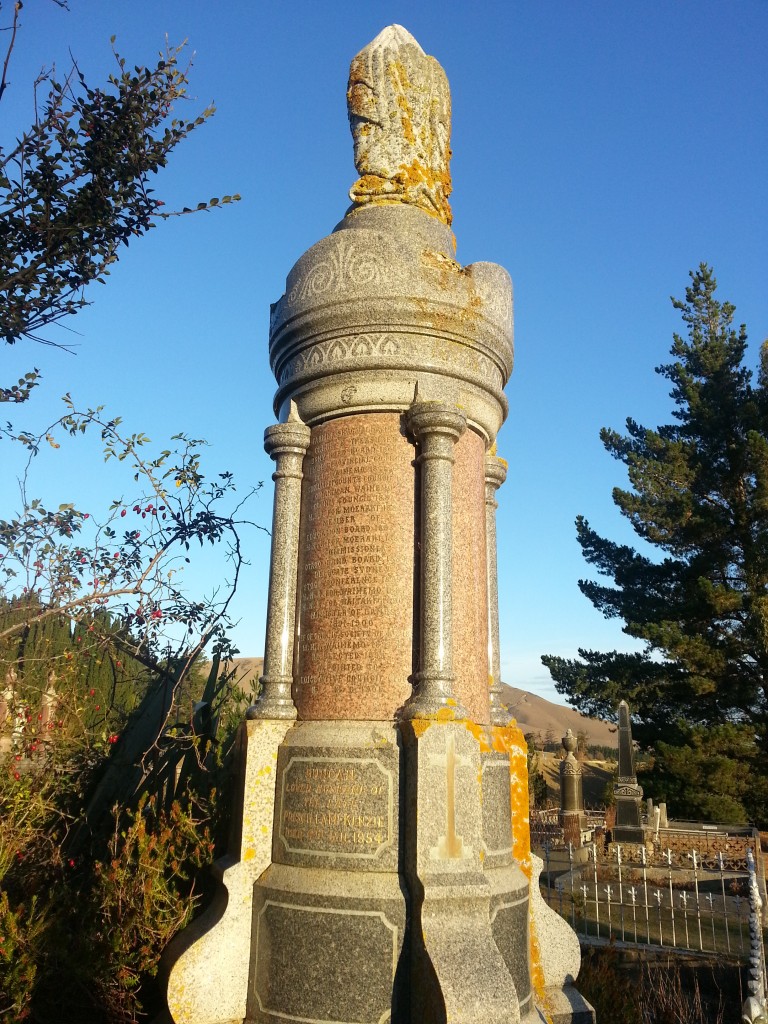
I won’t say any more today about John McKenzie, as I plan to go into depth on him when I summit Puketapu.
Moving on, we discovered many mysteries.
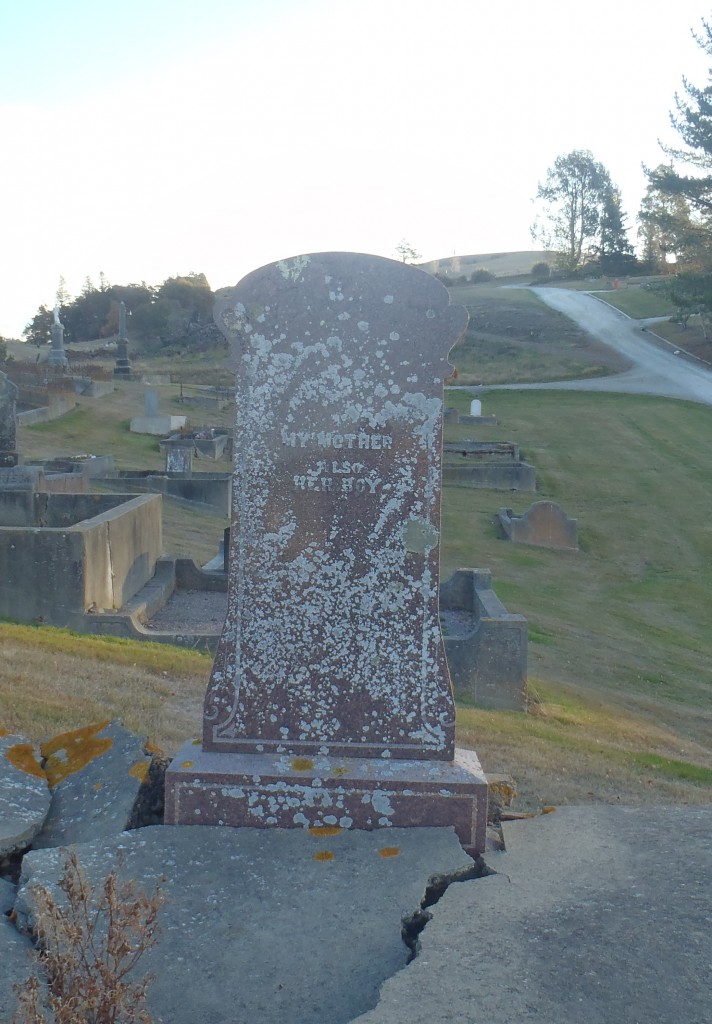
But there was one headstone in particular that struck me. The concise inscription hinted at a heartbreaking tale, as it recorded the deaths of three children in one day, and then the death of another only two weeks later.
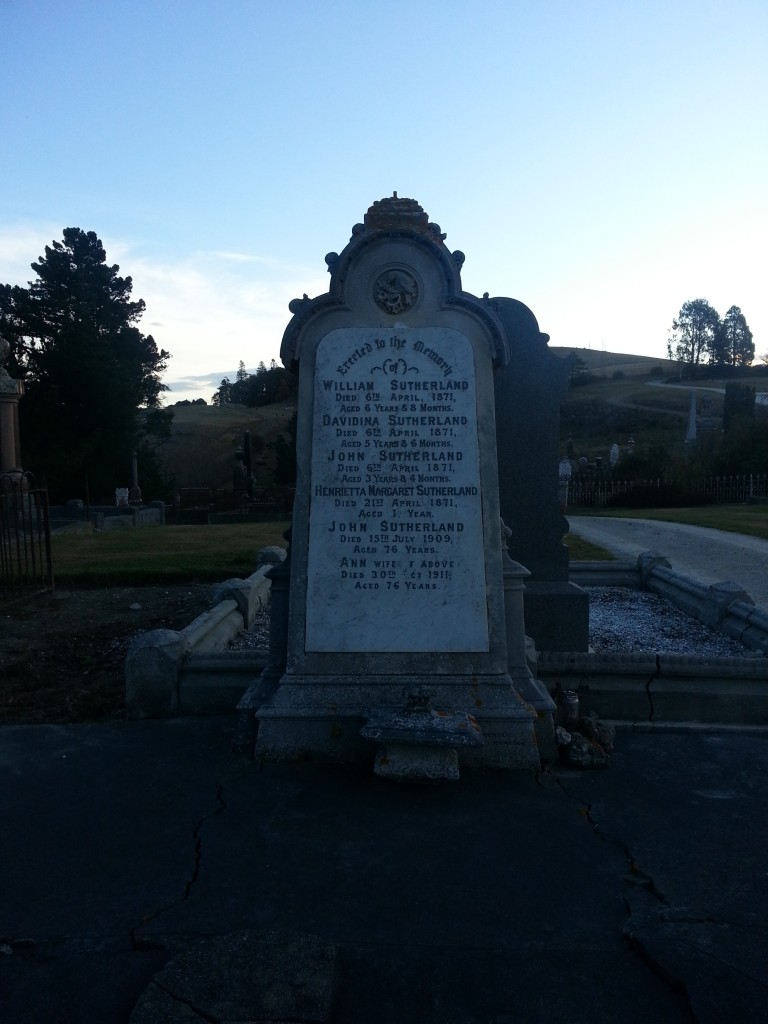
John Sutherland was born in 1833 in Caithness in the far north of Scotland. He arrived in New Zealand as an assisted migrant on the Henrietta in 1860 and two years later he married Ann, also an immigrant from Caithness who arrived in 1860. My romantic imagination wonders if they arrived on the same ship. They were married at Sir John McKenzie’s residence at Puketapu, so it sounds like they had some good connections!
John worked his trade as a blacksmith, spent some time prospecting at Gabriels Gully, then bought some land at Goodwood(to the south-east of Palmerston) and settled down.
So what of the terrible disaster that took four of his children? I told you to remember the Robert Henderson, and this is where we meet her again. She arrived at Otago Harbour in December 1870, plagued by scarletina(scarlet fever). She was held at Quarantine Island for 13 days, but it seems in this case the quarantine measures weren’t quite stringent enough – you will recall that the disease claimed young William Dougall, of the family that maintained the island.
The newspapers traced the spread of the disease thusly: two men fresh off the Robert Henderson took employment on a farm near Dunedin. One got sick, the other left, and some members of the household became ill. A “half-caste” girl named Thompson who was saying there at the time carried the fever to a Pleasant River family. So far there had been no fatalities, but that changed when the girl moved on to the Sutherland homestead at Goodwood. The heartbreaking result was that John and Ann Sutherland lost four of their children in quick succession to the fever.
This is the kind of horror that stringent quarantine measures were supposed to prevent, a kind of horror that is almost forgotten to us in our era of modern medicine.
John lived a further 38 years and Ann outlived him for another two. They left three surviving children and were mourned as some of the earliest settlers of the Goodwood area.
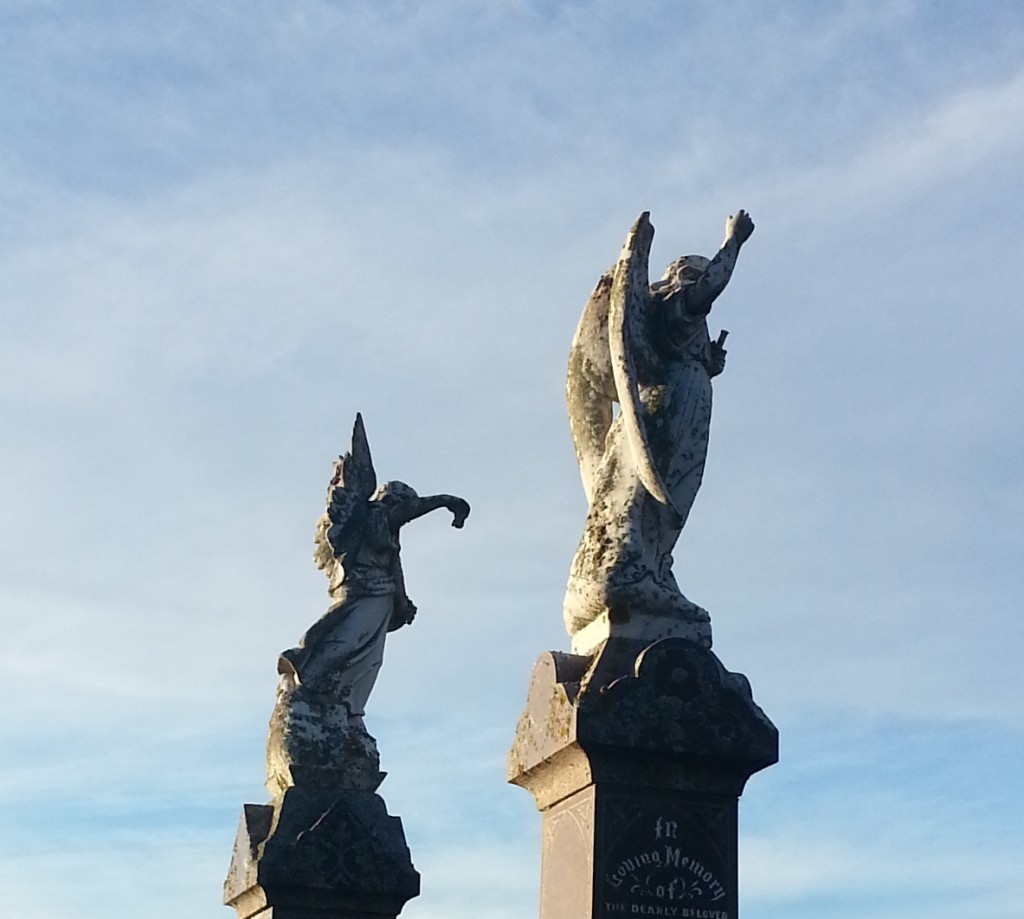
As the light faded on the slopes of Puketapu, we farewelled the people of Old Palmerston and returned to our base of operations, where a warm fire and some furry cuddles helped to bring us back to the present.
References:
In the Land of the Dwindle River by George Griffiths
Palmerston Presbyterian Church by Graham F. Lyman
The Penguin History of New Zealand by Michael King
PERSONAL Otago Daily Times , Issue 14578, 17 July 1909, Page 10
PERSONAL. Otago Daily Times , Issue 15294, 7 November 1911, Page 6
Untitled Evening Star, Volume IX, Issue 2550, 20 April 1871, Page 2
A Short History of Quarantine Island by Lyndall Hancock
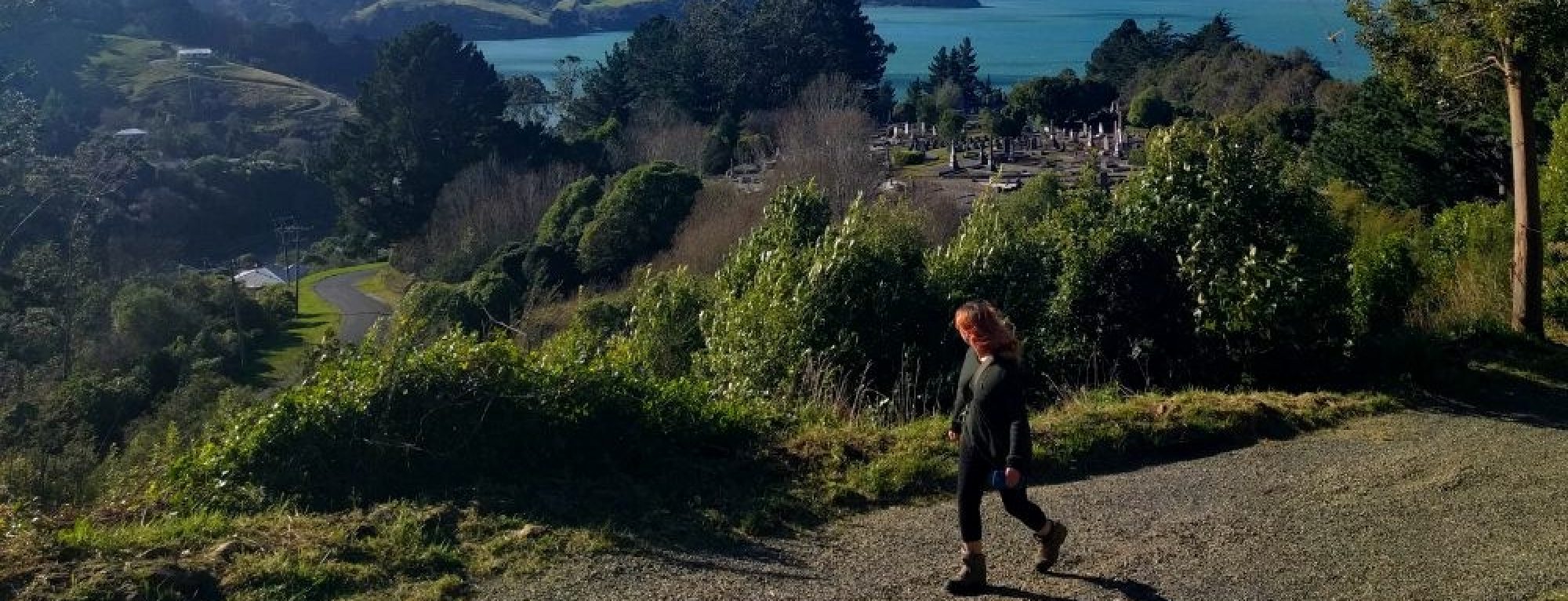

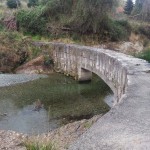


Nice visit to Palmerston. You mystery headstone is for Jane Birrell Oswald, died 1900, aged 77 and her son Henry who died in 1908, aged 60 years. Henry had been the Bootmaker in Palmerston for many years.
Thanks! I had no idea how to even start trying to figure out who they were!
the first time I saw zealandia some “wag” had (student ?)had placed a Speights bottle in her hand,every time I have seen it since I ponder whether it might have been an improvement.I love your blogs which I discovered by accident when I was trying to discover the location of the Faversham tunnel.
John Dowling.
bloody spell check changed caversham to faversham and I didn’t see it before posting.
Just found a recipe book that I received when my mum passed away. In the land of Dwindle river .It had pieces in that book about my grandfather Albert Kelly who was the local constable of Palmerston. Every year runners go up Puketapo hill. My grandfather use to run up there in the war time to look out for enemy ships. It took him 23 minutes. Next year in 2020 Oct is the 50th anniversary of Kellys Canter. It is run by the Palmerston Lions club.
My husband was minister at this beautiful Presbyterian Church for 10 years and our dear little daughter is buried in that cemetery-along with the Sutherland bairns of whom you write. Our older children were brought up here and in 1976 we celebrated the 100 th Anniversary of the Church Building. It was a memorable celebration in which many folk too part.It is a little place very close to the hearts of ourselves and our family and many who were with us in those days. Thank you so much for your article which was sent to us by our son in England.
Thanks Beth! Glad it could bring back some memories for you.